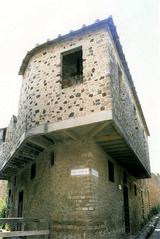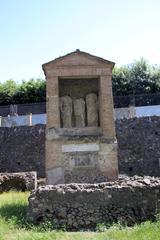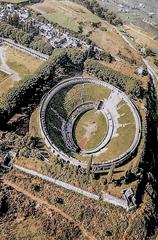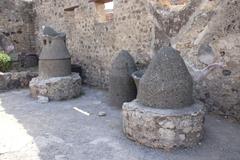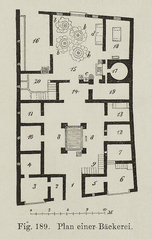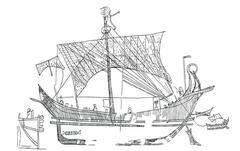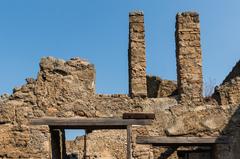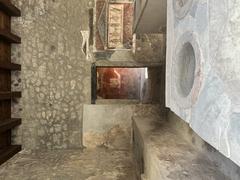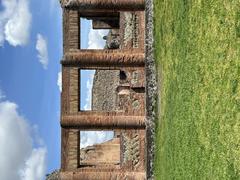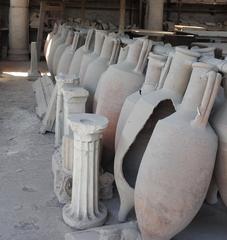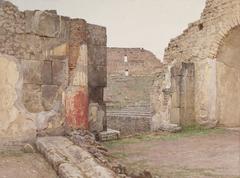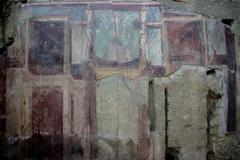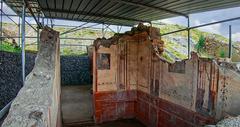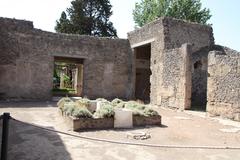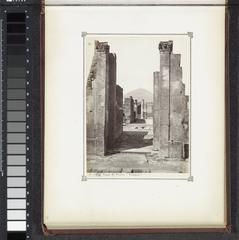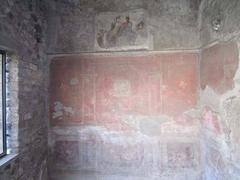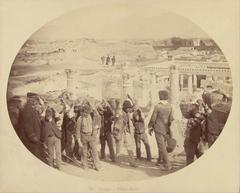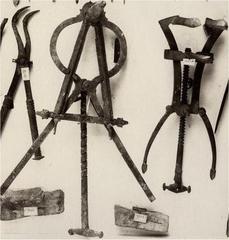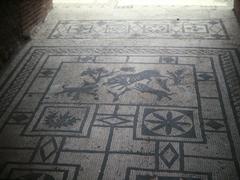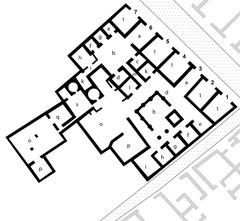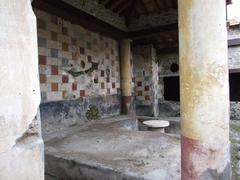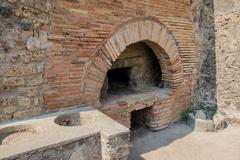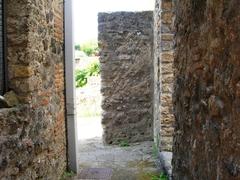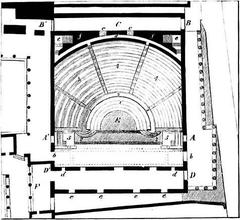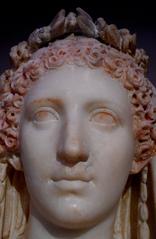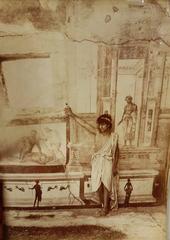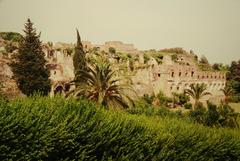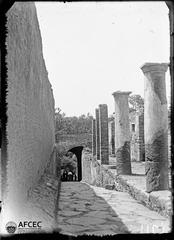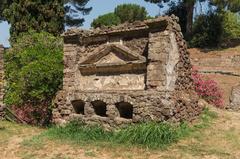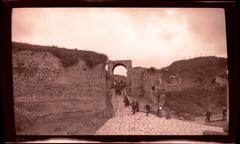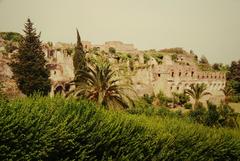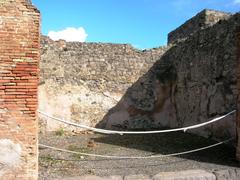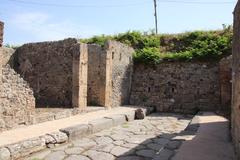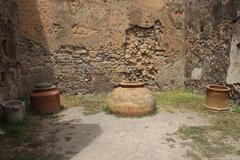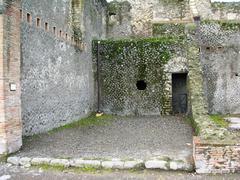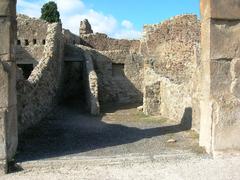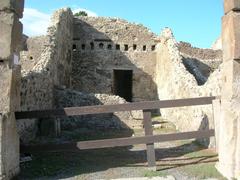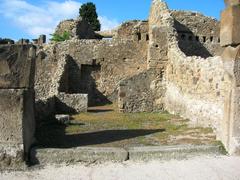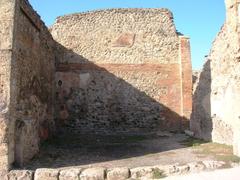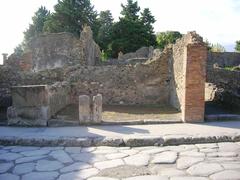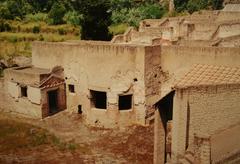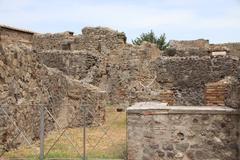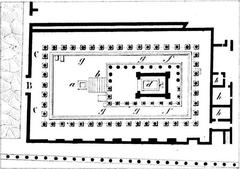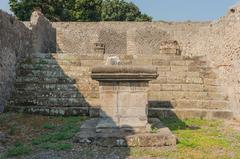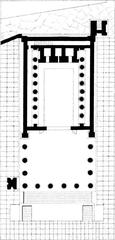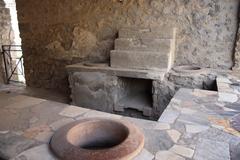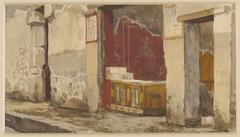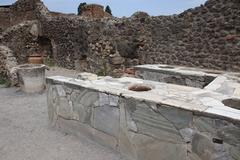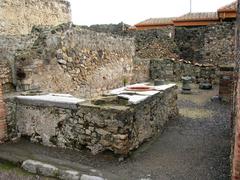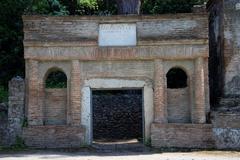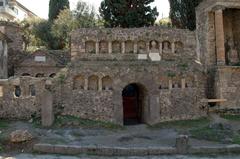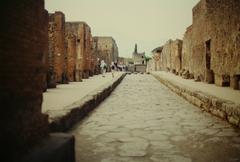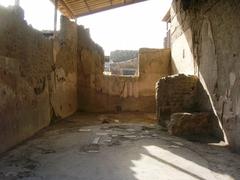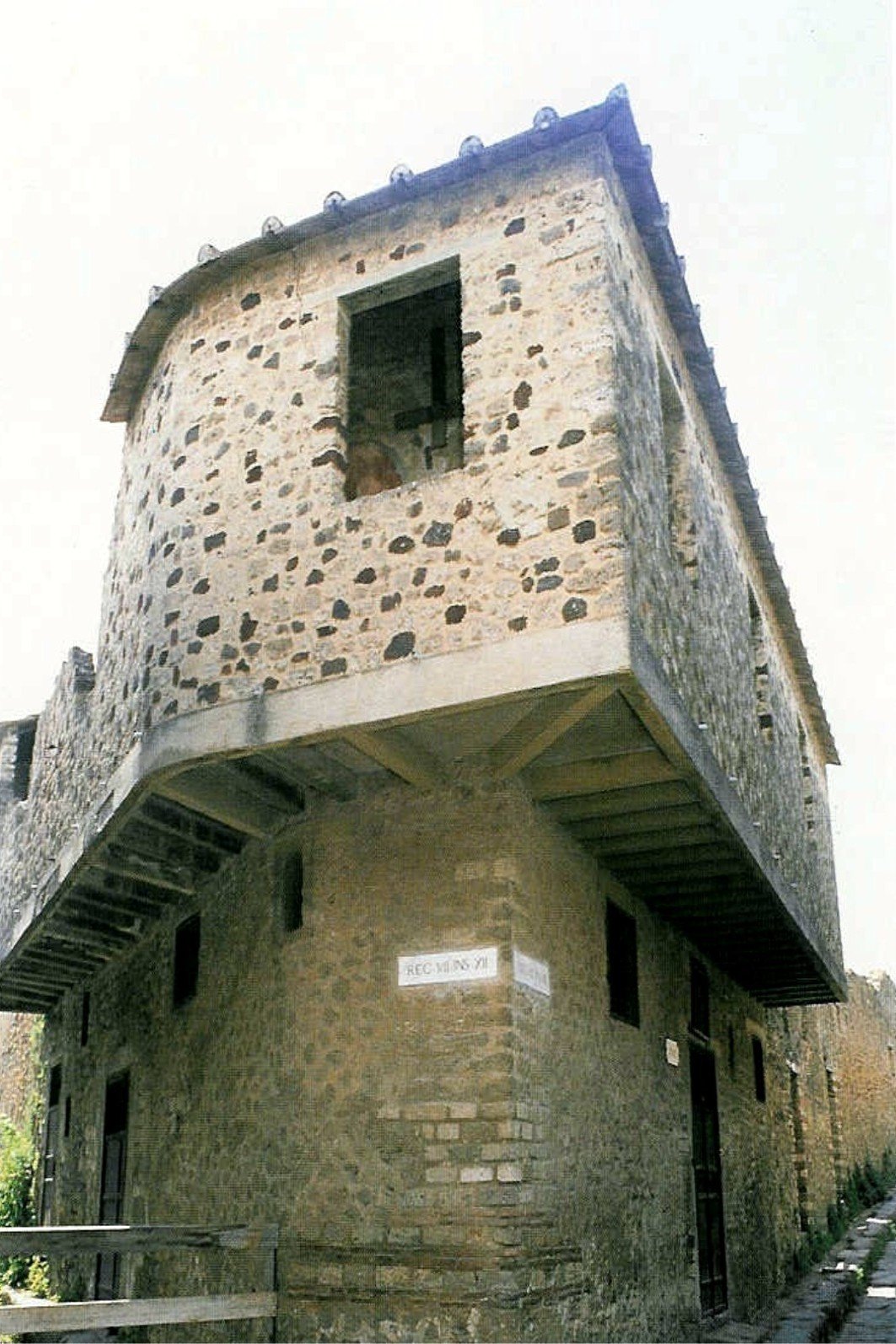
Guide to Visiting Scavi Archeologici di Pompei in Pompeii, Italy
Publication Date: 23/07/2024
Overview of the Scavi Archeologici di Pompei
Pompeii, an ancient Roman city near modern Naples in Italy’s Campania region, stands as one of the most captivating archaeological sites in the world. Its tragic burial under volcanic ash during the catastrophic eruption of Mount Vesuvius in 79 CE preserved the city in an extraordinary state, offering a unique glimpse into Roman life (source). Rediscovered in 1748, Pompeii has since been a focal point for historians, archaeologists, and tourists alike. The city’s ruins, including grand villas, public baths, temples, and theaters, provide an unparalleled snapshot of Roman urban planning, architecture, and daily activities. The well-preserved frescoes, mosaics, and artifacts found throughout the site have been invaluable in understanding Roman culture and technology (source). This guide aims to provide a comprehensive overview of Pompeii’s history, its archaeological significance, and essential visitor information, making it an indispensable resource for anyone planning to explore this remarkable ancient city.
Contents
- Introduction
- History of Pompeii
- Origins and Early History
- Roman Pompeii
- The Eruption of Mount Vesuvius
- Rediscovery and Excavation
- Archaeological Significance
- Modern Excavations and Conservation
- Visiting Pompeii Today
- Ticket Prices and Visiting Hours
- Travel Tips
- Nearby Attractions
- Pompeii in Popular Culture
- FAQ
- Conclusion
Introduction
Pompeii, the ancient Roman city frozen in time by the catastrophic eruption of Mount Vesuvius in 79 CE, offers a unique glimpse into Roman life. This guide covers its rich history, practical visitor information such as ticket prices, visiting hours, and travel tips, as well as the city’s archaeological significance and modern conservation efforts. Whether you’re a history enthusiast or a casual traveler, Pompeii is a must-visit destination.
History of Pompeii
Origins and Early History
Pompeii, located near the Bay of Naples in Italy, was founded in the 7th or 6th century BCE by the Oscans, an Italic people. The city later came under the influence of the Greeks and Etruscans before becoming a Roman colony in 80 BCE. Pompeii’s strategic location made it a bustling port and a significant center for trade and commerce in the Roman Empire.
Roman Pompeii
Under Roman rule, Pompeii flourished. The city was adorned with grand villas, public baths, temples, and theaters. The Forum, the heart of Pompeii, was a bustling marketplace and a center for political and social activities. The amphitheater, capable of seating 20,000 spectators, hosted gladiatorial games and other public spectacles. Pompeii’s urban planning reflected Roman architectural ingenuity. Streets were laid out in a grid pattern, and the city had an advanced water system with aqueducts, public fountains, and private baths. The wealthy citizens of Pompeii lived in luxurious homes decorated with intricate mosaics and frescoes, many of which have been remarkably preserved.
The Eruption of Mount Vesuvius
On August 24, 79 CE, Mount Vesuvius erupted catastrophically, burying Pompeii under a thick layer of volcanic ash and pumice. The eruption lasted for two days, and the city was entombed under approximately 4 to 6 meters (13 to 20 feet) of ash. The suddenness of the disaster meant that many residents were unable to escape, and their remains were preserved in the ash. The eruption of Vesuvius was documented by Pliny the Younger, who provided a detailed account of the event in letters to the historian Tacitus. Pliny’s descriptions have been invaluable to modern volcanologists and historians in understanding the eruption’s impact.
Rediscovery and Excavation
Pompeii remained buried and largely forgotten until its rediscovery in 1748 by Spanish engineer Rocque Joaquin de Alcubierre. Initial excavations were haphazard and focused on retrieving artifacts for private collections. It wasn’t until the 19th century that systematic archaeological excavations began under the direction of Giuseppe Fiorelli. Fiorelli introduced innovative techniques, including the use of plaster casts to capture the voids left by decomposed bodies in the ash. These casts provide hauntingly detailed impressions of the victims’ final moments. Fiorelli also implemented a grid system for excavations, which allowed for more organized and thorough exploration of the site.
Archaeological Significance
The excavation of Pompeii has provided an unparalleled glimpse into daily life in a Roman city. The preservation of buildings, artifacts, and even graffiti offers a unique snapshot of Roman society, culture, and technology. Pompeii’s ruins include well-preserved examples of Roman architecture, such as the Villa of the Mysteries, the House of the Faun, and the Temple of Apollo. The site has also yielded a wealth of artifacts, including pottery, tools, and household items, which have been invaluable in understanding Roman domestic life. The frescoes and mosaics found in Pompeii are among the finest examples of Roman art, depicting scenes from mythology, daily life, and nature.
Modern Excavations and Conservation
Excavations at Pompeii continue to this day, with archaeologists employing advanced technologies such as ground-penetrating radar and 3D scanning to uncover new areas and artifacts. Recent discoveries include the remains of a well-preserved horse, a richly decorated chariot, and a thermopolium (ancient fast-food counter) with vivid frescoes. Conservation efforts are ongoing to preserve the site for future generations. The Great Pompeii Project, launched in 2012 and funded by the European Union, aims to address the site’s structural issues and improve visitor facilities. The project has led to the restoration of several key buildings and the stabilization of fragile structures.
Visiting Pompeii Today
Ticket Prices and Visiting Hours
Pompeii is open daily except for January 1st, May 1st, and December 25th. The visiting hours are from 9:00 AM to 7:00 PM, with the last entry at 5:30 PM. Tickets can be purchased online or at the entrance. The standard ticket price is €16, with discounts available for EU citizens aged 18-25 and free entry for those under 18.
Travel Tips
For a smooth visit, consider the following tips:
- Wear comfortable shoes: The site is vast, and the ancient streets are uneven.
- Bring water: Especially during the summer months, staying hydrated is crucial.
- Plan your visit: Allocate several hours to explore the site thoroughly.
- Use available resources: Audio guides and maps are available at the entrance.
- Rest and refresh: There are several cafes and rest areas within the park.
Nearby Attractions
Pompeii is located near several other historical sites, including Herculaneum, another city destroyed by the eruption of Vesuvius. Naples, with its rich history and vibrant culture, is also nearby and worth a visit. The Naples National Archaeological Museum houses many artifacts from Pompeii and Herculaneum.
Pompeii in Popular Culture
Pompeii’s tragic fate and remarkable preservation have captured the public imagination for centuries. The city has been the subject of numerous books, films, and documentaries. Edward Bulwer-Lytton’s 1834 novel “The Last Days of Pompeii” popularized the story of the eruption, and more recently, the 2014 film “Pompeii” brought the ancient city to life on the big screen. Pompeii’s influence extends beyond literature and film. The city’s art and architecture have inspired countless artists and architects, and its ruins continue to attract millions of visitors each year. The site’s inclusion on the UNESCO World Heritage list in 1997 underscores its global cultural significance.
FAQ
Q: What are the opening hours of Pompeii?
A: Pompeii is open daily from 9:00 AM to 7:00 PM, with the last entry at 5:30 PM.
Q: How much do tickets to Pompeii cost?
A: The standard ticket price is €16, with discounts for EU citizens aged 18-25 and free entry for those under 18.
Q: Are there guided tours available?
A: Yes, guided tours are available and can be booked online or at the entrance.
Q: What should I bring when visiting Pompeii?
A: Wear comfortable shoes, bring water, and consider using audio guides and maps available at the entrance.
Q: Are there other historical sites nearby?
A: Yes, nearby historical sites include Herculaneum and the Naples National Archaeological Museum.
Conclusion
Pompeii’s enduring legacy as a window into the past continues to fascinate and educate, making it a must-visit destination for history enthusiasts and travelers alike. Whether you’re exploring the ancient streets, marveling at the well-preserved buildings, or learning about Roman life, a visit to Pompeii is an unforgettable experience. Don’t forget to download the mobile app Audiala for the latest updates and follow on social media for more information on related historical sites and events.
